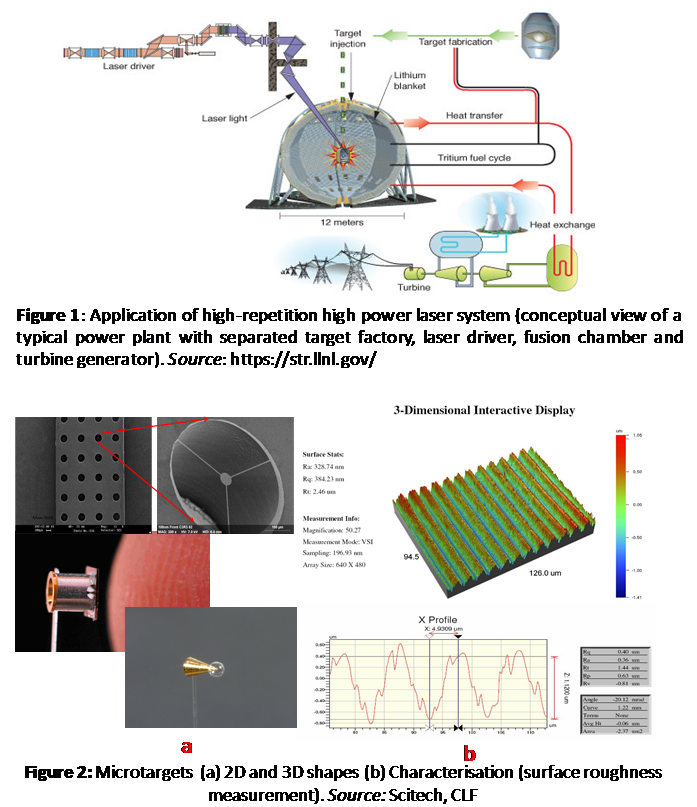Microtargets irradiated by high power lasers (HPL) enable experimental study of a wide range of objects and materials under extreme conditions, for example, ion production for potential future oncology techniques, laboratory astrophysics and ‘inertial fusion energy’.
StudentSupervisorsProfessor Richard Leach |
|
Project overview

The target fabrication group within the Central Laser Facility (CLF) of STFC Rutherford Appleton Laboratory (RAL) supplies a wide range of microtargets, for example, micro-assembly, thin film coating, low density materials, to the laser user communities at home and in the international arena. As such, a shift of recent lasers development towards high repetition rate HPL has direct implications in the capacities and capabilities of the fabrication group. This is because, established methods of target fabrication are less suited to meet the high volume target demands for HPL. This has created a need for a source of targets that is reproducible and also flexible around a common target placement mechanism that must be considered as a part and parcel of a solution capable of providing ‘target stream’ to the high repetition rate laser systems. To fully realise the potential of future high repetition rate laser systems, real-time metrology will be required at matching rates.
Aim and objectives
The aim of this PhD project is:
To establish the metrological requirements of microtarget fabrication and microtarget delivery system necessary for the development of matching laser capability of CLF to operate as a high repetition rate laser facility.
The objectives of the project can be outlined as follows:
- To understand the requirements of targetry stream (mass production of target and delivery of targets to the chamber in high numbers) for high repetition laser system.
- To model CLF’s laser Astra-Gemini’s new target positioning system, known as High Accuracy Positioning System (HAMS), to establish a framework that will facilitate a systematic approach to the analysis of errors and to the assessment of their influence on the overall accuracy of the machine.
- To characterise the target assemblies (targets, silicon wafer, interface wheel etc) and also to characterise the target alignment system.
- To determine the optimum metrology parameters to be used during the fabrication of targets and also during the alignment process inside the chamber.
- To suggest a model that can act as a structure to describe systematically the metrological requirements of a targetry stream, based on the Micro-Electro-Mechanical System (MEMS)-fabricated silicon wafer-based target and the HAMS, for high repetition rate laser system.
Current research
• Develop an error model for HAMS.
• Investigate the microtarget positioning and alignment system of CLF.

